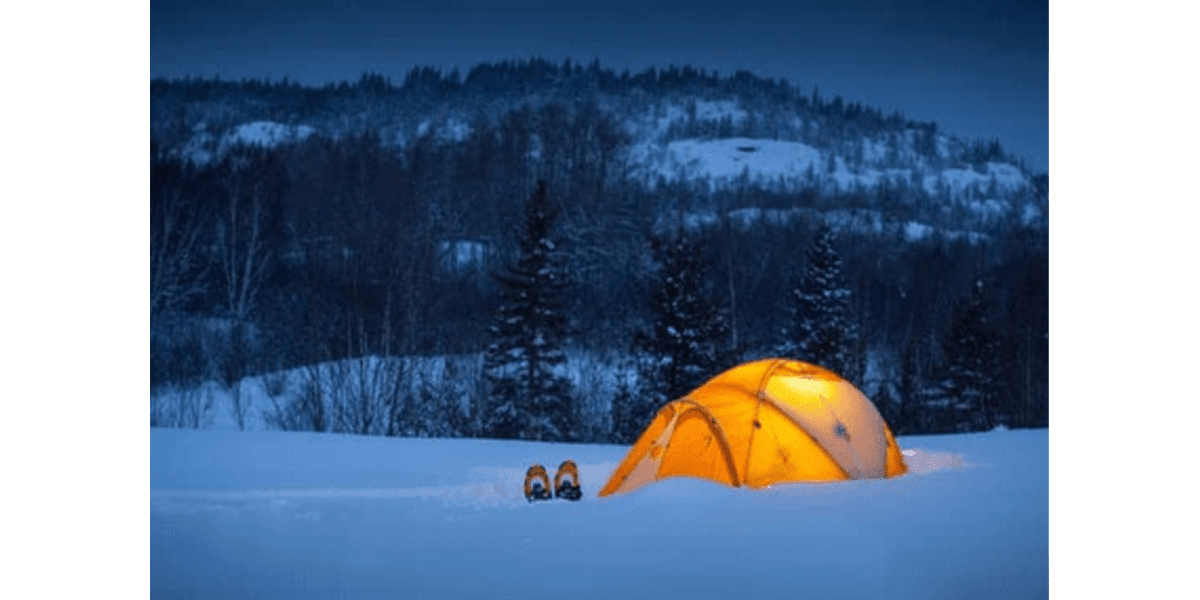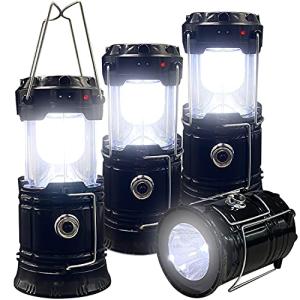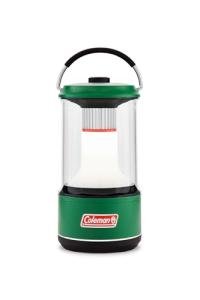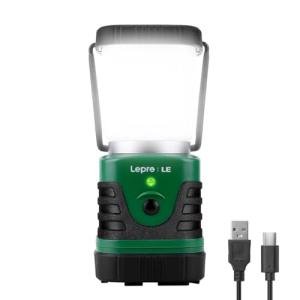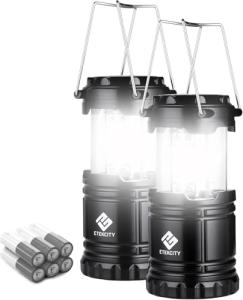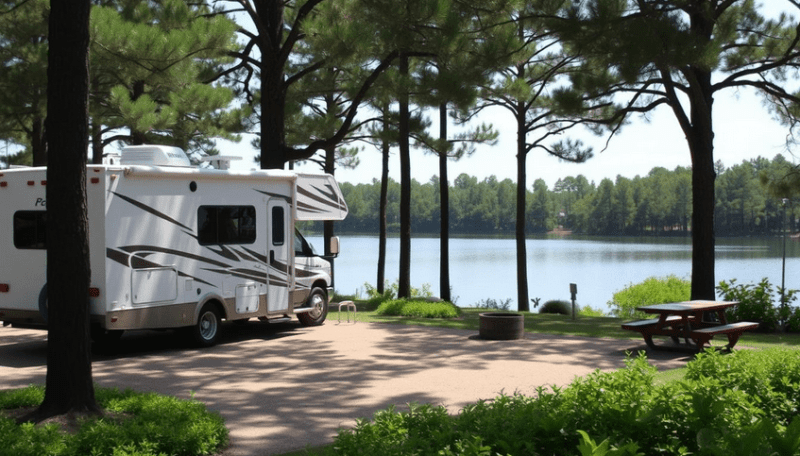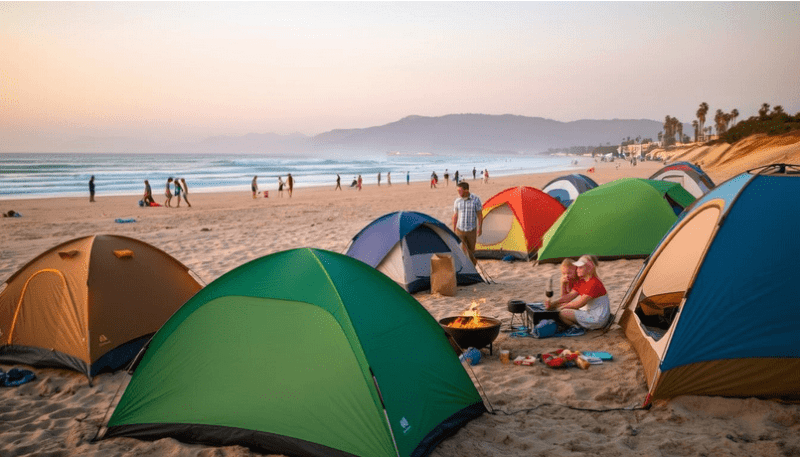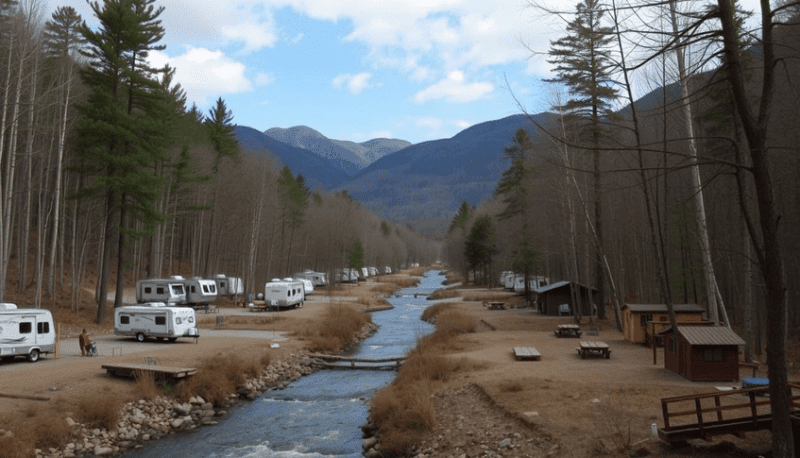Camping in a winter storm can be an exhilarating adventure if approached with the right preparation and attitude. The challenge lies in ensuring safety and comfort amidst the harsh conditions that nature presents. Securing a warm and resilient shelter, like a 4-season tent, is crucial for withstanding the elements and staying safe. Making careful choices in camping gear, alongside a systematic approach to setting up camp, can greatly enhance the winter camping experience.

Staying warm is not just about the tent; it's about comprehensive planning and preparedness. Ground insulation, proper layering, and sourcing quality gear all contribute to maintaining body heat. Preparation extends beyond just warmth; one must consider food strategies and emergency plans to handle unexpected situations. Attention to these details can make the difference between a challenging night and a pleasant adventure.
Appreciating the beauty and solitude of a snowy landscape can be incredibly rewarding. Yet, awareness of weather conditions and the right equipment are essential to avoid potential hazards. Winter camping can offer unique activities that turn a cold night into a memorable experience. Those who venture into these conditions prepared find not only survival but joy in nature’s winter embrace.
Key Takeaways
- The right tent is crucial for survival.
- Insulation and layers keep you warm.
- Prepare food and emergency plans.
Choosing the Right Tent
Selecting the appropriate tent is crucial for comfort and safety during winter storm camping. Key considerations include the tent's seasonality and the features of 4-season tents that ensure protection against harsh weather.
Understanding Tent Seasonality
Tents are categorized by seasonality, impacting their suitability for different weather conditions. 3-season tents are designed for spring, summer, and fall, offering ventilation and lightweight construction. They are not ideal for winter storms due to limited insulation and structural stability.
On the other hand, 4-season tents are constructed to withstand winter and severe weather. These tents use durable materials and stronger poles to resist snow load and high winds. Proper seasonality selection ensures that campers remain sheltered and secure.
Features of a 4-Season Tent
A 4-season tent is tailored for winter camping with features that prioritize warmth and durability. Insulation is a key element, often enhanced by heavier fabrics and heat-retaining designs. These tents also incorporate low-ventilation options to minimize heat loss while managing condensation.
Another important feature is the tent's robust frame. A stronger pole system helps it maintain shape and stability under snow and wind stress. Additionally, design elements such as a low profile and aerodynamic shape reduce the impact of strong winds. Adopting these features ensures that campers are well-protected in extreme conditions.
Essential Camping Gear

When camping in winter storms, having the correct gear is vital for safety and comfort. This guide covers sleeping essentials, thermal insulation, and appropriate clothing layers necessary for enduring cold weather conditions.
Sleeping Bags and Pads
A winter sleeping bag is a must-have specifically designed to handle low temperatures. It should have a lower-limit temperature rating suited for extreme cold. Sleeping pads offer additional insulation by preventing heat loss to the ground. Closed-cell foam pads are durable and provide excellent insulation. Combining a pad with a sleeping bag liner can add extra warmth. Adding a mylar blanket inside the sleeping bag reflects body heat, increasing warmth retention.
Thermal Insulation Materials
Insulation is crucial for retaining warmth. Mylar blankets are lightweight and reflect body heat, offering a portable insulation solution. Hot water bottles, placed in the sleeping bag, can provide hours of heat. Using materials like wool or fleece for sleeping bag liners or blankets enhances warmth. Tent insulation can be reinforced using thermal blankets hung around the interior, reducing heat escape. It's important to ensure the tent is properly sealed against wind.
Navigating Cold Weather Clothing
Layering clothing is key to regulating body temperature. Base layers should be moisture-wicking and thermal, such as those made from merino wool or synthetic materials. Mid-layers like fleece sweaters trap warmth, and outer layers should be waterproof and wind-resistant to shield against harsh conditions. Accessories like thick socks, gloves, and a cold-weather hat are essential. Layering provides flexibility, allowing campers to adjust as temperatures fluctuate.
Setting Up Camp

Surviving a winter storm while camping requires careful planning, especially when selecting where to pitch your tent and setting it up properly. Attention to detail, like ground insulation and site selection, can make a significant difference in comfort and safety.
Site Selection
Choosing the right campsite is crucial when camping in winter conditions. A location sheltered from the wind, such as near hills or natural barriers, helps maintain warmth.
Camping on deep snow can provide extra insulation but ensure the snow is compact and stable. Avoid low-lying areas where cold air settles and moisture collects, as these spots can become uncomfortable or hazardous. It's also wise to keep a distance of at least 200 feet from water sources to prevent unexpected flooding due to melting snow.
Tent Setup Best Practices
A reliable, four-season tent is ideal for withstanding harsh weather. Speed is essential when setting up; lingering outdoors without shelter can quickly lead to cold-related issues.
Start with a solid foundation by using a foam or inflatable sleeping pad with a high R-value for ground insulation. Laying a tarp beneath the tent can help prevent moisture from seeping in, though ensuring it doesn't extend beyond the tent floor is crucial to avoid funneling water.
Securing the rainfly tightly prevents snow and rain from entering the tent. Utilizing models with sufficient ventilation decreases condensation buildup inside. Utilizing insulating layers, such as a bivy sack inside your sleeping bag, boosts warmth and improves comfort during cold nights.
Weather Preparedness

Staying informed about weather conditions ensures the safety of those camping in winter storms. By assessing forecasts and adapting plans accordingly, campers can experience a more secure and enjoyable outing.
Checking Weather Conditions
Before embarking on a winter camping trip, it is essential to check the weather in advance. This involves monitoring reliable sources such as national weather services or dedicated weather apps. Look for updates on storm warnings, snowfall amount, and expected temperature drops.
Understanding trends over several days can help prepare for unexpected changes. For those who are already camping, portable weather radios are invaluable. They offer up-to-date information about sudden shifts in conditions, such as blizzards or severe cold spells.
By prioritizing this step, campers gain valuable insights into potential hazards. This proactive approach helps in planning for emergency supplies and gear adjustments, like additional layers or storm-worthy tents. It's a crucial step to enhance safety and comfort when facing challenging weather.
Adjusting Plans Accordingly
Once weather conditions are known, adjusting plans is necessary. This can include changing the camping location to a less exposed area or postponing the trip altogether if severe weather is forecasted.
It's wise to consider how weather impacts travel routes and access points. Snow-covered roads might affect timetables, so flexibility in the itinerary is crucial. Campers should have a contingency plan ready, including shelter options and escape routes.
In addition, gear modifications might be needed. For example, stronger tent stakes and additional insulation layers could be necessary due to heavy snow or high winds. Collectively, these adaptations ensure preparedness and increase the likelihood of a safer camping experience.
Maintaining Warmth

Staying warm while winter camping in a tent requires careful attention to body heat retention and the strategic use of supplementary heat sources. Proper planning and equipment can make the difference between a comfortable night and a dangerously cold experience.
Managing Body Heat
Keeping the body warm starts with insulation. Layering clothing is crucial for trapping heat; however, using layers that can wick moisture helps avoid dampness that cools the body. Sleeping bags with higher R-values provide better insulation against the cold ground, preventing heat loss.
Thermal sleeping pads are also essential. They create a barrier between the cold ground and the body. It's helpful to keep the head and feet well-covered, as these areas are prone to losing heat. Consuming high-calorie snacks and warm drinks before sleeping can help maintain body temperature.
Effective Use of Heat Sources
Tent heaters offer direct warmth. Choosing one designed for indoor use is vital to ensure safety and reduce the risk of carbon monoxide poisoning. Many campers opt for portable propane heaters with built-in safety features.
For those without heaters, hot water bottles can be used to deliver warmth to sleeping bags. Placing a heated bottle near the feet can significantly raise comfort levels. Reflective blankets or liners inside the tent further enhance the retention of body heat. Remember to maintain ventilation even when using heaters, to ensure good air quality inside the tent.
Food and Hydration Strategies

In a winter storm, proper food and hydration strategies are crucial to maintaining energy and health. Strategic planning can ensure warmth and sustenance in harsh conditions.
Nutrition Choices
Having the right foods can bolster energy levels and generate warmth. High-calorie foods such as nuts, dried fruits, and energy bars provide quick energy. Foods rich in carbohydrates and fats, including pasta, cheese, and chocolate, are excellent for sustained energy release.
Warm meals are especially vital. Instant soups and oatmeal are easy to prepare and help to maintain body heat. Preparing meals that require minimal cooking time ensures efficient use of energy. Also, pack snacks that are easy to access and consume quickly.
Keeping Liquids from Freezing
Prevent liquids from freezing to ensure adequate hydration. Store water bottles upside down; ice forms from the top, leaving the bottom accessible for drinking. Using insulated sleeves or wrapping bottles in clothing can keep them from freezing.
A reliable thermos helps keep beverages like tea and soup warm, providing both hydration and heat. Preparing hot drinks regularly aids in warmth and hydration, but be cautious of caffeine, which can dehydrate. Plan and equip adequately to maintain liquid accessibility, preserving health during the camping trip.
Safety and Emergency Planning
Camping in winter storms demands meticulous attention to safety and preparedness. Key considerations include understanding emergency protocols and equipping oneself with essential safety gear specifically designed for cold weather conditions.
Navigating Emergencies
In a winter storm, timely response to emergencies is crucial. Campers should have a reliable communication device, such as a satellite phone, to contact rescue services if needed. They must also familiarize themselves with basic wilderness first aid to treat injuries on the spot.
Additionally, creating an emergency plan involves identifying nearby shelters or safe zones. Campers should inform someone of their itinerary and expected return time. In extreme circumstances, they should be prepared to signal for help using mirrors, whistles, or flares. Setting up a schedule for checking in on weather updates can ensure preparedness against worsening conditions.
Essential Safety Gear
Packing the right gear is vital for surviving winter storms in a tent. Insulated sleeping bags and sleeping pads protect against hypothermia by retaining body heat. Waterproof clothing is essential to stay dry and avoid frostbite.
An easily accessible first aid kit, complete with supplies like bandages and antiseptic wipes, is necessary for handling minor injuries. Pee bottles are practical for minimizing exposure to the cold by reducing the need to exit the tent during the night. A multi-tool and reliable light sources, such as headlamps or lanterns, are also critical for handling any unexpected situations that may arise.
Additional Winter Activities
Combining camping with sports like skiing can provide a thrilling experience. Ensuring proper footwear, such as waterproof boots, is crucial for comfort and safety during these activities.
Combining Camping with Winter Sports
Winter camping offers a unique opportunity to combine outdoor activities like skiing and snowshoeing. These sports allow campers to explore the trails and terrains surrounding their campsite, providing an exciting way to stay active during their trip. Renting equipment may be beneficial for those who don’t own their gear, and many nearby rental shops cater to this need.
Exploring trails also offers a chance to enjoy the scenic beauty of snow-dusted landscapes. Safety is important, so choosing trails that match personal skill levels is recommended. Staying informed about weather conditions ensures these activities remain enjoyable and safe, helping to avoid unexpected challenges.
Footwear Considerations
Proper footwear is essential for maintaining warmth and mobility during winter camping. Waterproof boots are particularly important. They keep feet dry and insulated, crucial for preventing frostbite and ensuring comfort on snowy or wet surfaces. When selecting boots, consider factors like insulation, waterproofing, and fit.
Layering with warm socks complements this choice, enhancing comfort and warmth. It’s advisable to bring an extra pair or two of socks in case one gets wet. For those engaging in sports, finding boots that offer support without sacrificing flexibility can enhance the enjoyment of these activities. With the right footwear, anyone can comfortably navigate the challenges of a winter campsite.
Frequently Asked Questions
In winter storms, proper insulation, essential gear, and safety practices are crucial for maintaining warmth and ensuring a safe camping experience. Here are the answers to some common questions about surviving in these conditions.
What are the best ways to insulate a tent for winter camping?
Insulating a tent is vital for warmth. Use thermal blankets or a tent carpet to enhance insulation. Ensure the tent is windproof and has a rainfly, and place a ground tarp underneath to prevent moisture ingress. Adding extra layers of sleeping pads or investing in an insulated tent can provide additional protection against cold weather.
Can you recommend any extreme cold weather camping hacks?
Layering is key. Use multiple sleeping layers such as a sleeping bag liner or additional blankets. Place hot water bottles in your sleeping bag for extra warmth. Consider using a mylar blanket on top of your sleeping bag for added heat retention. Having a small camping heater inside the tent, while closely monitoring for safety, is also beneficial.
What items are essential for a cold weather camping checklist?
Essential items include a 4-season tent, a high-quality sleeping bag rated for low temperatures, and a sleeping pad with good insulation. Don’t forget thermal clothing, waterproof outerwear, insulated boots, gloves, and a hat. Bring a portable stove for cooking, a reliable light source, and a first aid kit. Extra batteries and a power bank should be on hand for emergencies.
What are the safest practices for sleeping in a tent during a winter storm?
Avoid tent placement near hazardous areas like open water or steep slopes. Secure all tent components properly to withstand strong winds. Ventilate the tent to prevent condensation buildup. Keep wet gear outside and ensure all sleeping areas stay dry. Carrying an emergency communication device is a prudent precaution them to stay connected.
Up to what temperatures is it considered safe for winter tent camping?
Winter tent camping can be safe in temperatures as low as -10°C (14°F), provided proper gear and clothing are used. It may be feasible to camp in lower temperatures with advanced preparation and high-quality equipment. It’s essential to consider personal tolerance levels and the experience of the camping group to make informed decisions.
How can you stay warm while camping in a tent during extreme winter conditions?
Stay warm by using high R-value sleeping pads and a thermal-rated sleeping bag. Dress in thermal layers and wear wool socks. Consuming warm, high-calorie foods and staying hydrated help maintain body heat. Create and use barriers between yourself and the cold ground with foam tiles or layers of blankets. Always monitor weather conditions and adjust plans as necessary.
DISCLAIMER
This document is provided for general information purposes only and should not be relied upon as providing legal advice, technical, or specific operational guidance to the reader, whether as to the practices described in the document or the applicable legal requirements and regulations. bestcampingdeals.com expressly disclaims any responsibility for liability arising from or related to the use or misuse of any information in this document.
